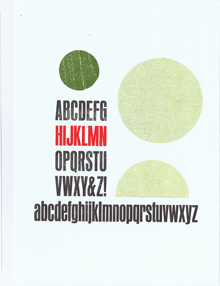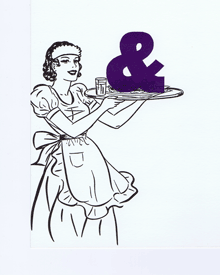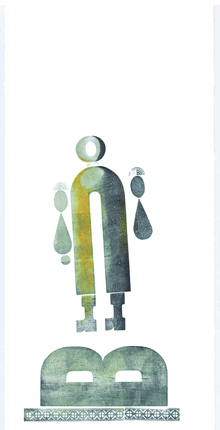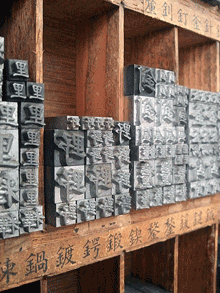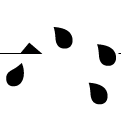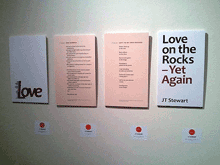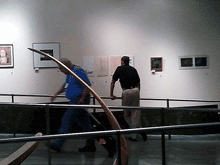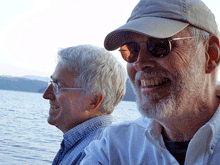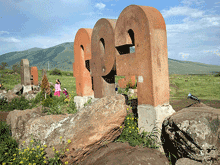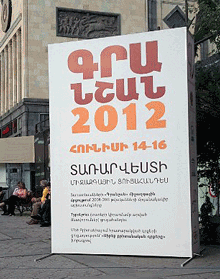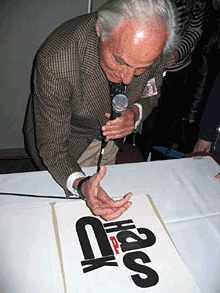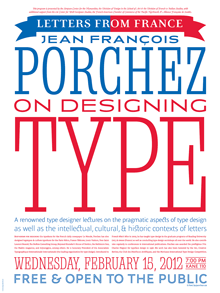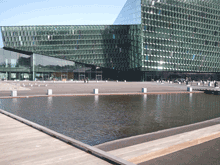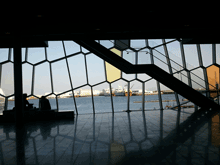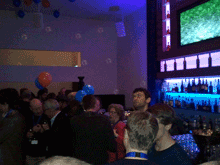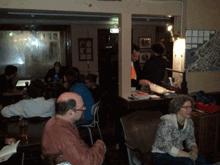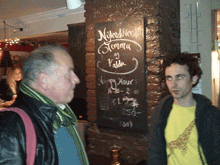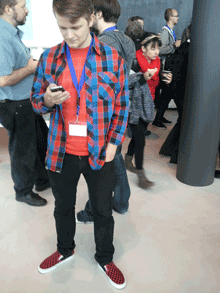For last month’s TypeCon in Portland, Oregon (“TypeCon Portl&” as it was dubbed), Jules Faye and I prepared a talk about the work of her late partner Chris Stern, who was an innovative letterpress printer with a particular fondness for sans-serif type. Although he came to typography through learning to set phototype at a local job shop, and later headed up the type department at the fledgling Microsoft Press, Chris taught himself letterpress printing and became an expert in hand-set and hot-metal typesetting. At his death, Chris had been working on a manifesto about the use of sans-serif type in metal, with lots of images both informative and playful and lots of samples of carefully set Monotype and foundry sans-serif type. He never completed this work, but Jules unearthed enough notes and proofs and trial settings that we could weave a narrative around them that we thought would inspire some of the printers and typographers in the audience.
We got to show some of Chris’s meticulously layered typographic compositions, as well as fanciful characters – printed faces and bodies made up entirely of metal type. We also showed some of his serious book work (concentrating on the ones where he used sans-serif), as well as some sample spreads for his unfinished manifesto: juxtaposing sober blocks of sample text with whimsical but pointed illustrations. I even scanned and zoomed in on several pages of Chris’s notes and edits to his own proposed text – but a little of that goes a long way when you’re seeing it projected on a big screen. One passage from his own text that we quoted and showed in a sample setting was his description of the type for the manifesto itself: “Sans Transgression/ This book was going to be 100% sans serif. It seemed only fitting, after all. But along the byways of design, Commercial Script jumped into my path and I couldn’t resist. I feel confident that this will be my only sans transgression. My partner, however, says not to worry because there aren’t any serifs, just swirls.”
Among my favorite images are the multi-color prints of U-Man, an anthropomorphic character whose body is a bold, condensed capital U (sans-serif, of course!) and whose other body parts sometimes changed from one incarnation to the next.
In presenting this material, Jules felt that we were opening up Chris’s unfinished manifesto and giving it a continuing life, whatever form that may take. Nothing is ever finished.
“Warning! Adults Only! Product contains letterforms at their most exposed! Viewer Discretion Is Advised. Adults Only: Warning!”
On Sunday afternoon, I caught a city bus up to the north end of town for an open house at the C.C. Stern Foundry, which is now the home of much of the printing and type-casting equipment that once filled up the barn at the “printing farm” of Stern & Faye. Many TypeCon attendees made the trek, so there was a lively group of printers, typographers, and interested amateurs. And whoever designed the nametags for the volunteer staff of C.C. Stern put to shame the design of the TypeCon nametags, which (typically) gave pride of place to the logo and kept the name too small to read from across a room.
This was a good TypeCon, full of good conversations and with a number of excellent talks and presentations. Of course Portland is a great city to visit – it’s hipster central, a land of coffee, beer, wine, and food trucks, with a very convenient transit system. The weather even gave us a taste of Northwest drizzle, though it also gave us some un-Northwestern warm humidity. I think pretty much everyone had a good time.
The visual identity for this TypeCon rendered the host city as “Portl&” in a very retro-’80s graphic style. I kept referring to it as “Port L’ampersand” – the little settlement on the Willamette River that grew up to be a real city written with real letters.
Next up on the typographic calendar: ATypI in Amsterdam, October 9–13. See you there?

